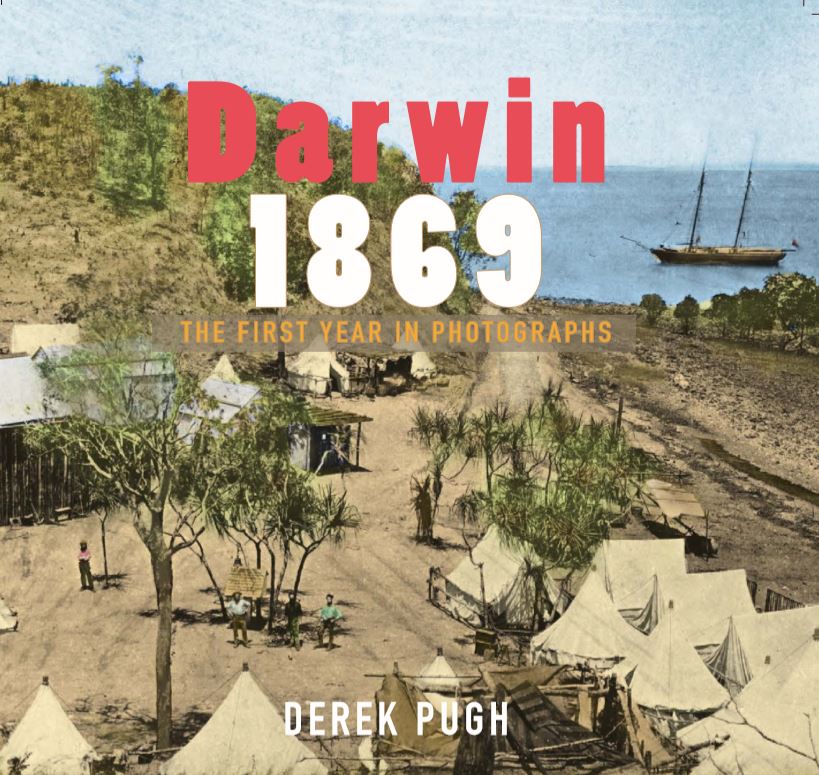Darwin 1869ONE HUNDRED AND FIFTY years ago, a motivated and professional team of surveyors and their support staff arrived in Darwin Harbour to measure the land and divide it into allotments already sold by the South Australian government.
This was the second attempt by the South Australians to establish a colony on the north coast and, under the leadership of the Surveyor General, George Goyder, the work was done at an astonishing rate. Darwin 1869: The Second Northern Territory Expedition, and Darwin 1869: The First Year in Photographs are an illustrated celebration of Darwin’s 150 year history. The photographs of two men allow us to peer into the lives of our first settlers from the very first days of the settlement: JOSEPH BROOKS arrived in Adelaide at the age of nine. He became a draftsman with the SA Department of Survey and Crown Lands in 1864 and was chosen by Goyder to join the Northern Territory Expedition when he was 21 years old. As well as draftsman, he was the official photographer for the expedition until he left the settlement in September with Goyder on the Gulnare. He used a stereographic camera that took two images which could be seen in 3D when used a viewer of paired lenses. In later years he moved to New South Wales for a further career in surveying and then took up astronomy, travelling the Pacific Ocean to chase of solar eclipses. He died of Bright’s disease in 1918 in Woollahra, aged 70. CAPTAIN SAMUEL WHITE SWEET was a keen amateur photographer and he was able to help Brooks take the official photographs, as well as take his own that he could then sell to the public back in Adelaide. As Brooks’s drafting duties became more time consuming, Sweet took over much of the role of ‘official’ photographer. Sweet’s photographs can usually be identified by a small anchor-shaped scratch etched onto the plate before printing. Captain Sweet brought the Gulnare five times from Adelaide to Port Darwin, but in October 1821 she hit a reef near the Vernon Islands while carrying telegraph line equipment to the Roper River. She was able to limp back to Port Darwin, but Government Resident Douglas, who found her slow and unwieldy, was delighted to condemn the little ship. She was stripped of anything useful and left to rot on the beach below Fort Hill. Her masts were recycled, and were later strapped to the side of the Springbok to take south. Captain Sweet returned to Adelaide to captain the Wallaroo, carting coal for the Black Diamond Line, until she run aground in a storm in 1875. He then retired from the sea and opened a photography business off Rundell Street, Adelaide. He was one of South Australia’s most prominent documentary photographers through the 1870s to January 1886, until he collapsed and died near Riverton, South Australia, apparently of sunstroke. He was survived by Elizabeth Tilly, with whom he had four daughters and five sons. Since both Brooks and Sweet left the colony on September 28, there was no photographer in Palmerston until Sweet’s return at the end of January, 1870. All their images in these books were therefore made between February 5 and September 28, 1869. They are precious—Darwin is unusual in that it is the only pre-Federation Australian capital to have been photographed from the very beginning. Derek Pugh, Darwin, June 2018 |
DARWIN 1869: The Second Northern Territory Expedition.Buy Derek Pugh Books
|

